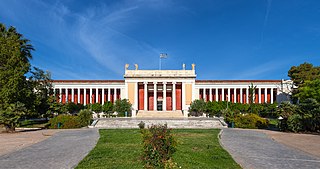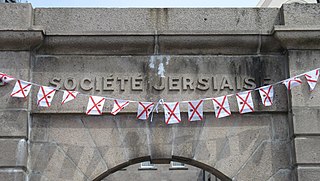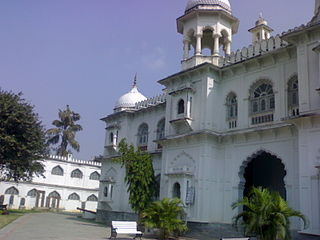Sources
- Jersey Heritage Report mentioning return on Mummy artefacts to Hougue Bie
- Museum Display Case, Archaeology Section, Hougie Bie, Jersey
In 1835, John Gosset from Jersey, Channel Islands, took an expedition to Thebes, Egypt, and returned with various artifacts and a mummy (the Jersey Mummy). John Gosset died on the way back in Paris. His father, Isaac Gosset, took over, and brought the mummy to Jersey, where it was housed in a museum in Belmont Road, Saint Helier, along with other Egyptian artifacts, and some Roman and Greek ones as well.
The mummy was dated to around 1069–945 BC. It was thought to be that of a high priestess, but in 1837, it was carefully unwrapped, and found to be that of a middle aged man, early 40s, about 5 ft 5 in.
The museum later closed around 1850, and artifacts were returned to people who had given them for show. Isaac Gosset being dead, the mummy went to a new owner (who the records do not name), presumably the next of kin in the family. He obviously did not care much for a mummy being deposited at his house, because the next we hear about the matter, it is of the mummy having been burnt to ashes somewhere in Longueville, Jersey.
There are a few artifacts left, and these can be seen in the display case at La Hougue Bie, Jersey in the archaeology museum there.

A mummy is a dead human or an animal whose soft tissues and organs have been preserved by either intentional or accidental exposure to chemicals, extreme cold, very low humidity, or lack of air, so that the recovered body does not decay further if kept in cool and dry conditions. Some authorities restrict the use of the term to bodies deliberately embalmed with chemicals, but the use of the word to cover accidentally desiccated bodies goes back to at least the early 17th century.

The Museum of Egyptian Antiquities, commonly known as the Egyptian Museum, located in Cairo, Egypt, houses the largest collection of Egyptian antiquities in the world. It houses over 120,000 items, with a representative amount on display. Located in Tahrir Square in a building built in 1901, it is the largest museum in Africa. Among its masterpieces are Pharaoh Tutankhamun's treasure, including its iconic gold burial mask, widely considered one of the best-known works of art in the world and a prominent symbol of ancient Egypt.

Zahi Abass Hawass is an Egyptian archaeologist, Egyptologist, and former Minister of State for Antiquities Affairs, serving twice. He has also worked at archaeological sites in the Nile Delta, the Western Desert and the Upper Nile Valley.

Menpehtyre Ramesses I was the founding pharaoh of ancient Egypt's 19th Dynasty. The dates for his short reign are not completely known but the timeline of late 1292–1290 BC is frequently cited as well as 1295–1294 BC. While Ramesses I was the founder of the 19th Dynasty, his brief reign mainly serves to mark the transition between the reign of Horemheb, who had stabilized Egypt in the late 18th Dynasty, and the rule of the powerful pharaohs of his own dynasty, in particular his son Seti I, and grandson Ramesses II.

The Rosicrucian Egyptian Museum (REM) is devoted to ancient Egypt, located at Rosicrucian Park in the Rose Garden neighborhood of San Jose, California, United States.

The Indian Museum is a massive museum in Central Kolkata, West Bengal, India. It is the ninth oldest museum in the world and the oldest and largest museum in Asia, by size of collection. It has rare collections of antiques, armour and ornaments, fossils, skeletons, mummies and Mughal paintings. It was founded by the Asiatic Society of Bengal in Kolkata (Calcutta), India, in 1814. The founder curator was Nathaniel Wallich, a Danish botanist.
The Mummification Museum is an archaeological museum in Luxor, Upper Egypt. It is dedicated to the art of Ancient Egyptian mummification.

The National Archaeological Museum in Athens houses some of the most important artifacts from a variety of archaeological locations around Greece from prehistory to late antiquity. It is considered one of the greatest museums in the world and contains the richest collection of Greek Antiquity artifacts worldwide. It is situated in the Exarcheia area in central Athens between Epirus Street, Bouboulinas Street and Tositsas Street while its entrance is on the Patission Street adjacent to the historical building of the Athens Polytechnic university.

The Société Jersiaise is a learned society in Jersey which was founded in 1873, in the manner of similar county societies in the United Kingdom and Sociétés Savantes in France for the purposes of:

The dolmens of Jersey are Neolithic sites, including dolmens, in Jersey. They range over a wide period, from around 4800 BC to 2250 BC, these dates covering the periods roughly designated as Neolithic, or “new stone age”, to Chalcolithic, or “copper age”.

La Hougue Bie is a historic site, with museum, in the Jersey parish of Grouville. La Hougue Bie is depicted on the 2010 issue Jersey 1 pound note.

La Cotte de St Brelade is a Paleolithic site of early habitation in Saint Brélade, Jersey. Cotte means "cave" in Jèrriais. The cave is also known as Lé Creux ès Fées.
Throughout history there have been several mummy forgeries.

The National Archaeological Museum of Florence is an archaeological museum in Florence, Italy. It is located at 1 piazza Santissima Annunziata, in the Palazzo della Crocetta.

Telangana State Archaeology Museum or Hyderabad Museum is a museum located in Hyderabad, India. It is the oldest museum in Hyderabad.

The Archaeological Museum in Zagreb, Croatia is an archaeological museum with over 450,000 varied artifacts and monuments, gathered from various sources but mostly from Croatia and in particular from the surroundings of Zagreb.

The Kelsey Museum of Archaeology is a museum of archaeology located on the University of Michigan central campus in Ann Arbor, Michigan, in the United States. The museum is a unit of the University of Michigan's College of Literature, Science, and the Arts. It has a collection of more than 100,000 ancient and medieval artifacts from the civilizations of the Mediterranean and the Near East. In addition to displaying its permanent and special exhibitions, the museum sponsors research and fieldwork and conducts educational programs for the public and for schoolchildren. The museum also houses the University of Michigan Interdepartmental Program in Classical Art and Archaeology.

Archaeology is promoted in Jersey by the Société Jersiaise and by Jersey Heritage. Promotion in the Bailiwick of Guernsey being undertaken by La Société Guernesiaise, Guernsey Museums, the Alderney Society with World War II work also undertaken by Festung Guernsey.
Amasya Museum, also known as Archaeological Museum of Amasya, is a national museum in Amasya, northern Turkey, exhibiting archaeological artifacts found in and around the city as well as ethnographic items related to the region's history of cultural life. Established in 1958, the museum owns nearly twenty-four thousand items for exhibition belonging to eleven historic civilizations.